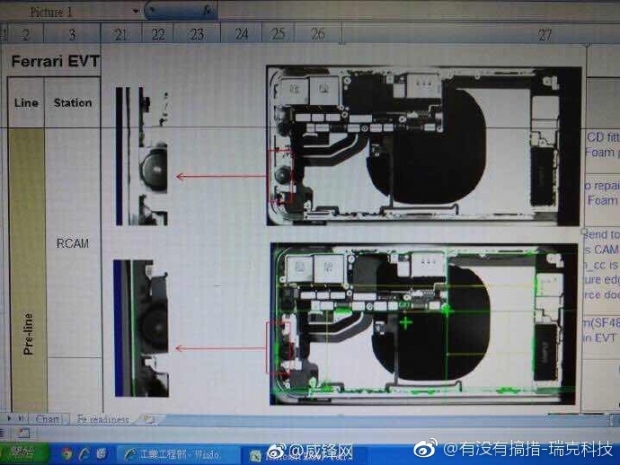It provides a look at the internal gubbins of the OLED iPhone that's expected to be announced next month and cost a fortune.
The images lack a layered glimpse into the iPhone's internal components, so they were probably not taken via x-ray and were more likely captured through some other form of black and white image processing.
The images depict an iPhone in the "engineering validation test" (EVT) stage of manufacturing with a codename of "Ferrari," the internal name for the iPhone 8 that was previously leaked in supply chain documents late last year.
We are not sure why Apple chose the name of the large red Italian turkey to front its latest phone. For those who don’t know, Ferrari is doing slightly better this year after years of being down the loo.
The snaps show a large, central black spot which we thought was a black hole which sucked out the users' intelligence and depth to create total subservience to the Apple cult. Others think it is the device's wireless charging coil, which is what will fuel the smartphone's long-rumoured and never delivered wireless charging features.
You can see the dual camera module for the rear camera, blown up shots of what appears to be the front-facing camera or sensors, a large space for the L-shaped battery, and a stacked logic board design previously rumored by KGI Securities analyst Ming-Chi Kuo.
This will finally give the iPhone a longer battery life, something which the iPhone is historically behind its rivals in preferring thinness rather than a substantial battery.
The Tame Apple press have been calling the validity of the images into question, saying that they only show an earlier design. We know that Apple is having problems with its yield rates. The iPhone 8 and its OLED display is only at 60 percent -- a number previously estimated by industry watchers -- because crafting the "special-shaped" OLED display is proving difficult.
This was confirmed by Foxconn on Weibo and was later removed.
The funny thing about this particular hack is that the Foxconn gear appears to be using Windows XP - we would have thought that would mean even more hacks. Still we guess Windows XP is about the same technological level as iOS.




